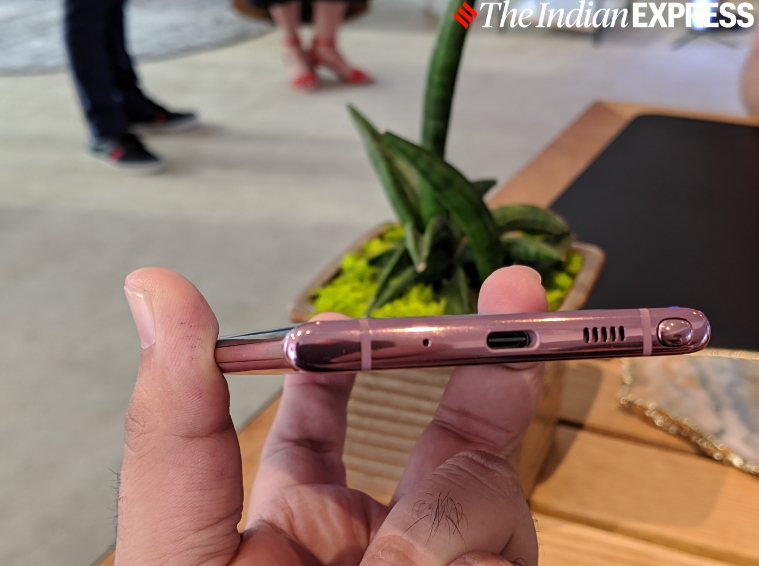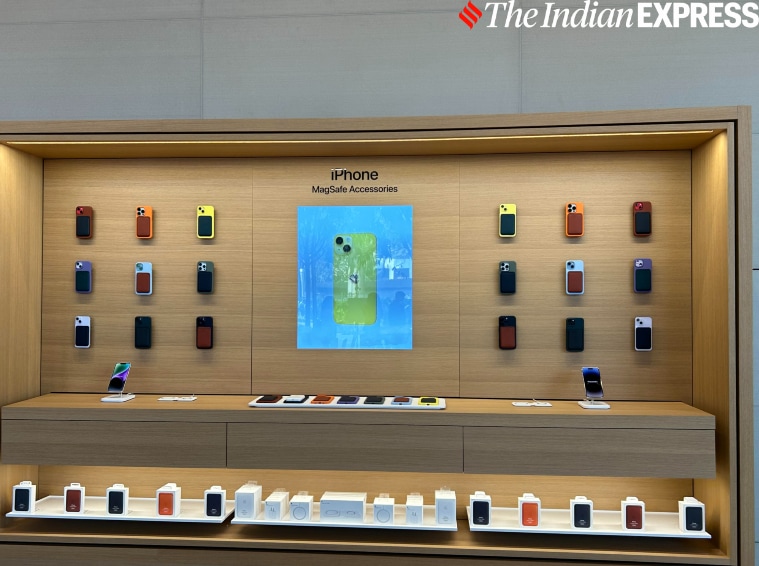For years, Apple has favoured its proprietary charging connector known as Lightning for iPhones. Introduced in 2012, Lightning connectors are the successor of Apple’s old 30-pin connectors and perform the same function as USB-C as both support faster charging and have a reversible design. However, there are some differences. For one, the Lightning connector can only be used to charge iPhones and older iPads since it is a proprietary technology by Apple. You simply cannot use a Lightning cable to charge your Android smartphone or tablet.

iPhone 15 Apple Event live updates
Apple designed the Lightning connector to make its iPhones slimmer as the older 30-pin dock was bulky — this was before the USB-C was launched. Apple first introduced the Lightning charger alongside the iPhone 5 in 2012. The move spurred an accessory business, requiring users to buy a $30 Lightning adapter to connect the device to older docks and speakers.
In hindsight, it made a lot of business sense to stick to its proprietary Lightning charger in favour of USB-C charging. Not only did it help Apple differentiate the iPhone from rival smartphones but it also benefited Cupertino financially with the sale of Lightning cables and related accessories under its own brand and through third-party vendors. This is why Apple has never used USB-C on iPhones. After all, it’s all about tight control to keep users in the Apple ecosystem and of course, the money.
Now that newer iPhones will feature a USB-C charging point, analysts expect Apple to take a financial cut from third-party accessories such as cables and adapters that require them to go through its Made For iPhone programme.
 All major Android smartphones ship with a USB-C charging port. (Image credit: Anuj Bhatia/Indian Express)
All major Android smartphones ship with a USB-C charging port. (Image credit: Anuj Bhatia/Indian Express)
What is USB-C?
The USB-C connector (also known as Type-C) is immediately recognisable – it has an oval shape and is completely symmetrical. The USB connector may be over 20 years old, but the Type-C is the first reversible cable and major revamp of the standard. A USB-C connector has a total of 24 pins, 12 on each side. USB-C connectors can be used to transfer data, power, and even video and audio. Almost all Android smartphones use USB-C cables, with the exception of Apple iPhones. But Apple’s other products such as the latest iPads and MacBooks already use USB-C.
 Apple’s proprietary Lightning port was introduced in 2012. (Image credit: AP)
Apple’s proprietary Lightning port was introduced in 2012. (Image credit: AP)
What’s the reason behind Apple’s U-turn and switch to USB-C charging?
Apple agreeing to ditch the Lightning connector on its next-generation iPhones to the USB standard is not by choice. Instead, Cupertino is forced to comply with a European Union law mandating new phones all use the same common USB-C charging port. New EU rules require all smartphones, tablets, digital cameras, speakers and other small devices to support USB-C by 2024. This is a first-of-its-kind law aimed at streamlining the number of chargers and cables consumers have to purchase.
Apple has been mostly affected by EU rules as other big companies such as Samsung and Xiaomi already sell smartphones with the Type-C port.
Apple opposed the law and the company said forcing manufacturers to use USB-C would make it harder for it to innovate. “We are concerned that regulation mandating just one type of connector for all devices on the market will harm European consumers by slowing down the introduction of beneficial innovations in charging standards, including those related to safety and energy efficiency,” Apple said in a 2021 letter. Last year, Greg Joswiak, Apple’s senior vice-president of worldwide marketing, said during an appearance at a technology conference in October that the company has “no choice” and Cupertino “comply with local laws” as it does around the world.
Story continues below this ad
Apple argues that switching to USB-C would increase e-waste and stifle innovation. But then iPads and MacBooks do support Type-C charging ports. There’s one big reason why Apple has resisted moving to USB-C on iPhones: ecosystem. The iPhone is at the center of the Apple ecosystem, and the company doesn’t want to give up control by giving up the Lightning port on the iPhones.
The newer iPhone 15 series will certainly come with a USB-C charging port but there’s no telling how Apple will execute the transition to Type-C on the iPhone. It’s unlikely Apple will make a special iPhone 15 to be sold in the European Union and keep the Lightning port on the iPhone for the rest of the markets.
“Yes, I think Apple is likely to move from Lighting to USB-C for a number of reasons: consumers – especially professional execs – are looking for faster and more universal charging cables, regulators in the EU are demanding it, the fact that the move has been made for other Apple products,” said Thomas Husson, vice-president and principal analyst at Forrester Research. “It remains to be seen if all products announced will benefit from it or just the Pro devices.”
 Apple makes a lot of money selling its Lightning cables and accessories. (Image credit: Anuj Bhatia/Indian Express)
Apple makes a lot of money selling its Lightning cables and accessories. (Image credit: Anuj Bhatia/Indian Express)
What does this mean for average iPhone users?
One of the biggest benefits of the transition to USB-C on the iPhone is that there will be a single charger for all your Apple devices. The switch to USB-C will benefit travellers and business professionals who carry different chargers. The move to adopt USB-C will also make it easier for people to use third-party accessories with their iPhones. However, there is a downside to it. Although USB-C is a widely popular charging standard on the market, it is a bit confusing.
Story continues below this ad
Perhaps the biggest problem with USB-C is that there are multiple different standards and protocols that can be used to power USB devices. In fact, a device with USB Type-C does not guarantee that you will get the fastest available data speeds. In comparison, Lightning is less complicated and since it’s Apple’s proprietary technology, it works as advertised. Apple is likely to warn users if a USB-C cable works with the iPhone but that requires an extra effort. But that could frustrate users despite the perks and convinces USB-C carries over the Lightning port.
Another scenario could be the possibility of removing ports entirely from the iPhone and supporting advanced wireless charging systems. Given wireless charging is currently slower and chargers much more expensive than wired, Apple may not go in that direction yet.
The Indian Express will be covering the Apple event live from Apple Park. Buy an Express subscription to ensure you don’t miss out on any of the insights.



 All major Android smartphones ship with a USB-C charging port. (Image credit: Anuj Bhatia/Indian Express)
All major Android smartphones ship with a USB-C charging port. (Image credit: Anuj Bhatia/Indian Express) Apple’s proprietary Lightning port was introduced in 2012. (Image credit: AP)
Apple’s proprietary Lightning port was introduced in 2012. (Image credit: AP) Apple makes a lot of money selling its Lightning cables and accessories. (Image credit: Anuj Bhatia/
Apple makes a lot of money selling its Lightning cables and accessories. (Image credit: Anuj Bhatia/





